OP-ED
Letter from KZN: Finding common ground with Piet Retief in the great, royal city of Umgungundlovu
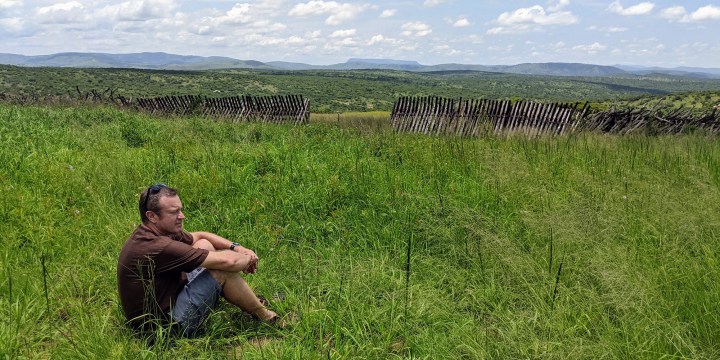
What am I, as a modern, forward-looking white South African, supposed to make of my namesake Piet Retief — or any other colonial forebears?
Fact is, I never knew what to do with the man. There he would hover, say, over my interactions with customer service agents who needed to get my surname right. “Yes, exactly. Retief like Piet Retief.”
An idlozi, then. An invisible shade, in a country dedicated to veneration of the ancestors. (A disclaimer: Piet Retief is my namesake and symbolic ancestor; I am, in fact, descended from the Retiefs who remained in the Western Cape.)
But what was I, as a modern, forward-looking white South African, supposed to make of him, or any other colonial forebears?
Here, for example, is Piet Retief in his own words, in his 1837 manifesto justifying the Great Trek:
“We complain of the severe losses, which we have been forced to sustain by the emancipation of our slaves.” And, “It is our determination to… preserve proper relations between master and servant.”
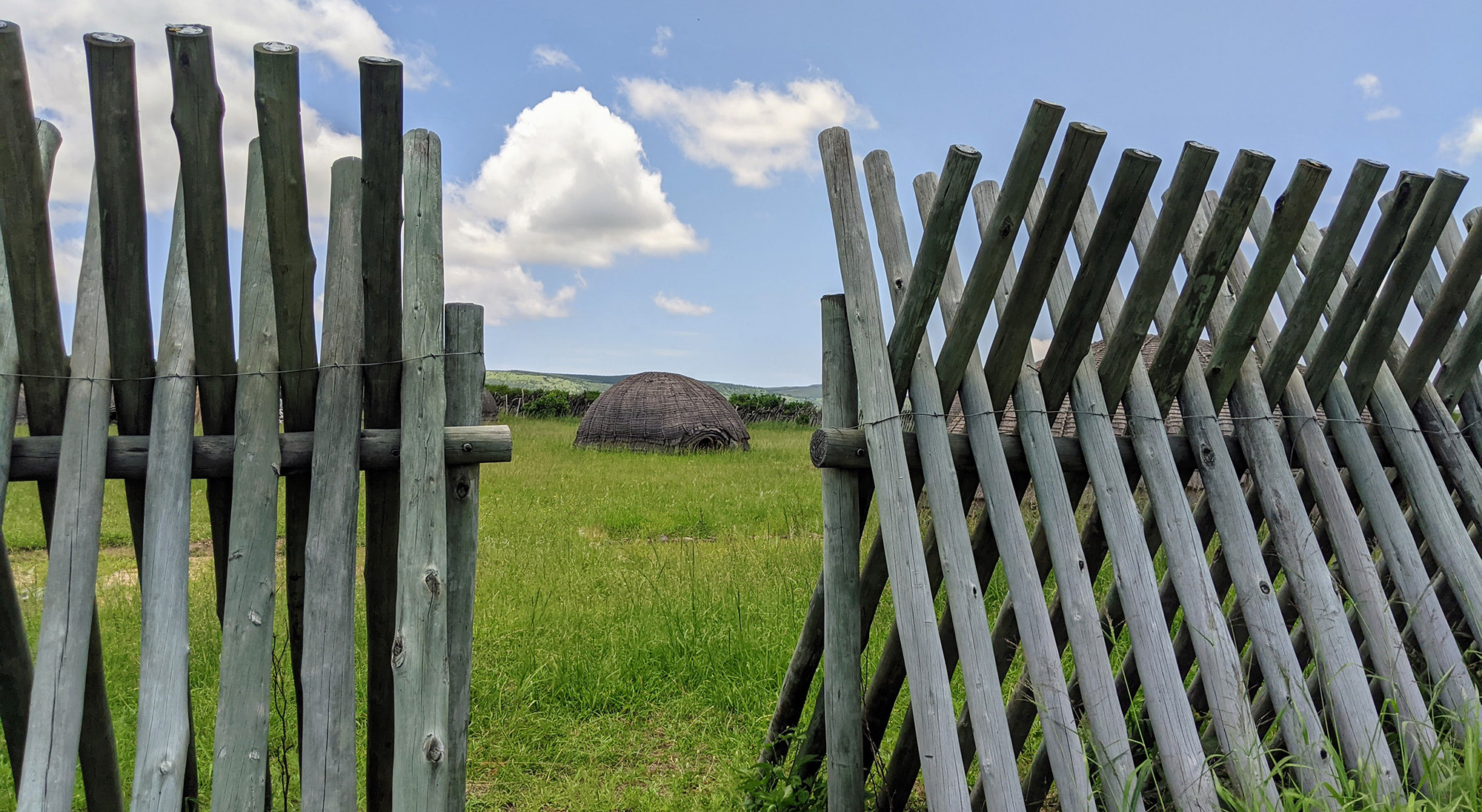
The likely spot where Piet Retief and his party were asked to leave their guns. (Photo: Peterson Toscano)
As a young man, I once read this manifesto, looking for anything resonant. Some mention of Dutch-speaking children being forced to use English. Complaints about discrimination. English settlers taking over the area — anything that could allow me to see the Voortrekkers as cultural independence fighters rather than racially aggrieved colonists.
I sought in vain. It was all race, race and race. As for Piet Retief’s vaunted treaty with Dingane ka Senzanghakhona, ceding him a third of the Zulu empire in exchange for returning a few hundred head of cattle from Dingane’s rival, Sekonyela?
Even if the document was real — and Jay Naidoo has famously argued it was a hoax — the whole deal smelled to me of colonial hubris: Manhattan for a handful of beads; Lobengula tricked into signing away Matabeleland.
But then, on a sunny weekday, I found myself in the reconstructed Zulu royal city of Umgungundlovu, near Melmoth, KZN — a quiet cluster of beehive-style huts looking out over grassy hilltops.
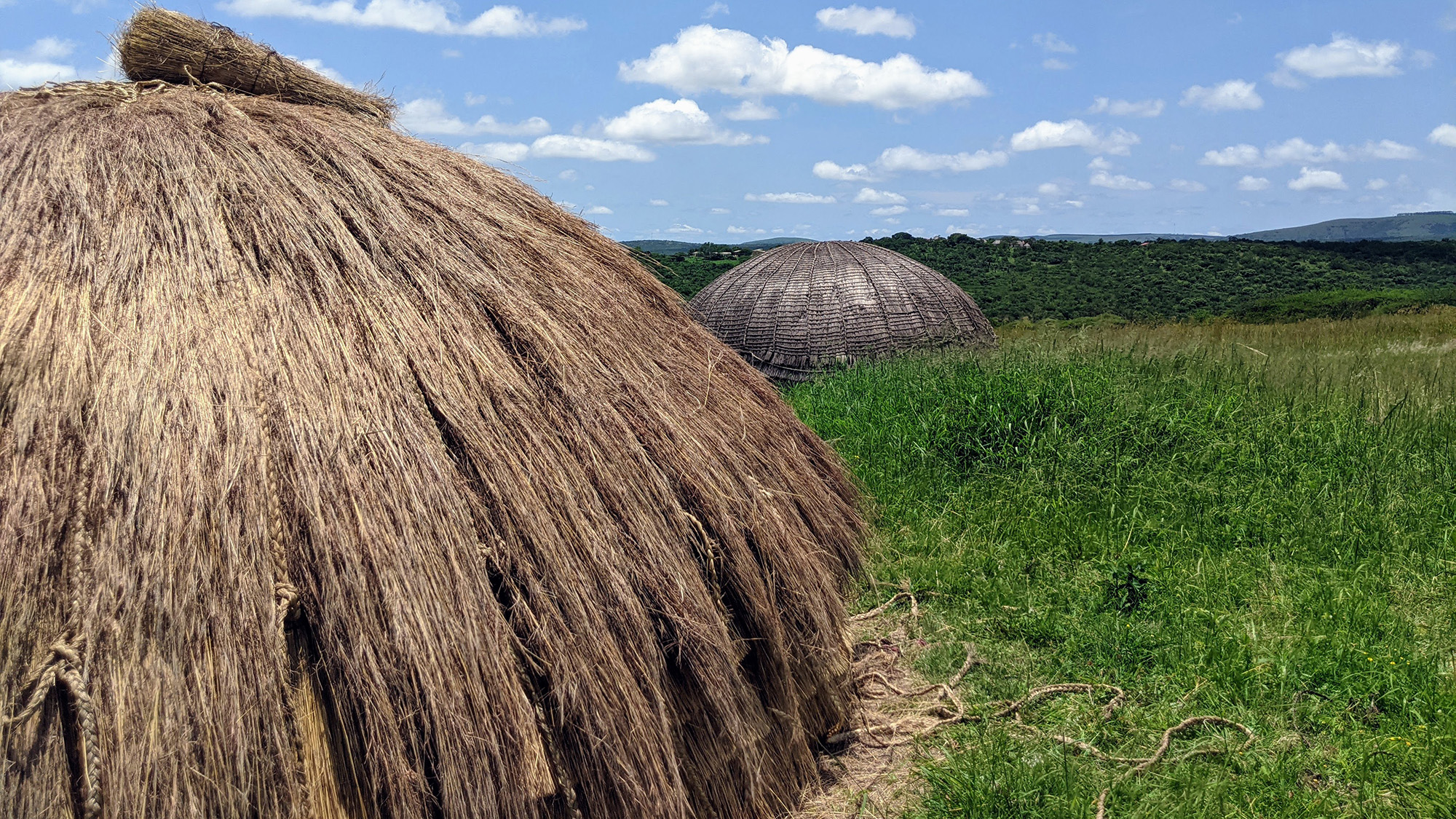
The royal enclosure Umgungundlovu has been beautifully reconstructed from archaeological and other records. (Photo: Peterson Toscano)
Dingane built Umgungundlovu in 1829. At its peak, it contained around 1,700 huts. Seeing the city for the first time in 1835, Captain Allan Gardner noted “the circular fence of the town appeared like a distant race-course” with numerous huts that were “snug, and neat, and clean”.
In 1838, after the Zulu defeat, Dingane ordered the city burnt. As a result, ample archaeological traces remained, including foundations and strut marks. Along with the extensive descriptions from missionaries, traders, and interviewees, these have allowed experts to restore the royal enclosure.
Our first stop was Dingane’s shady, large isigodlo, or palace. (Isigodlo also refers to the royal enclosure as a whole.)
Francis Owen, missionary and writing tutor to Dingane from 1837 to 1838, expressed the view that “[Dingane’s] house does great honour to native architecture. It is very spacious, lofty… It is supported by 21 posts which are covered from top to bottom with beads of various colours.”
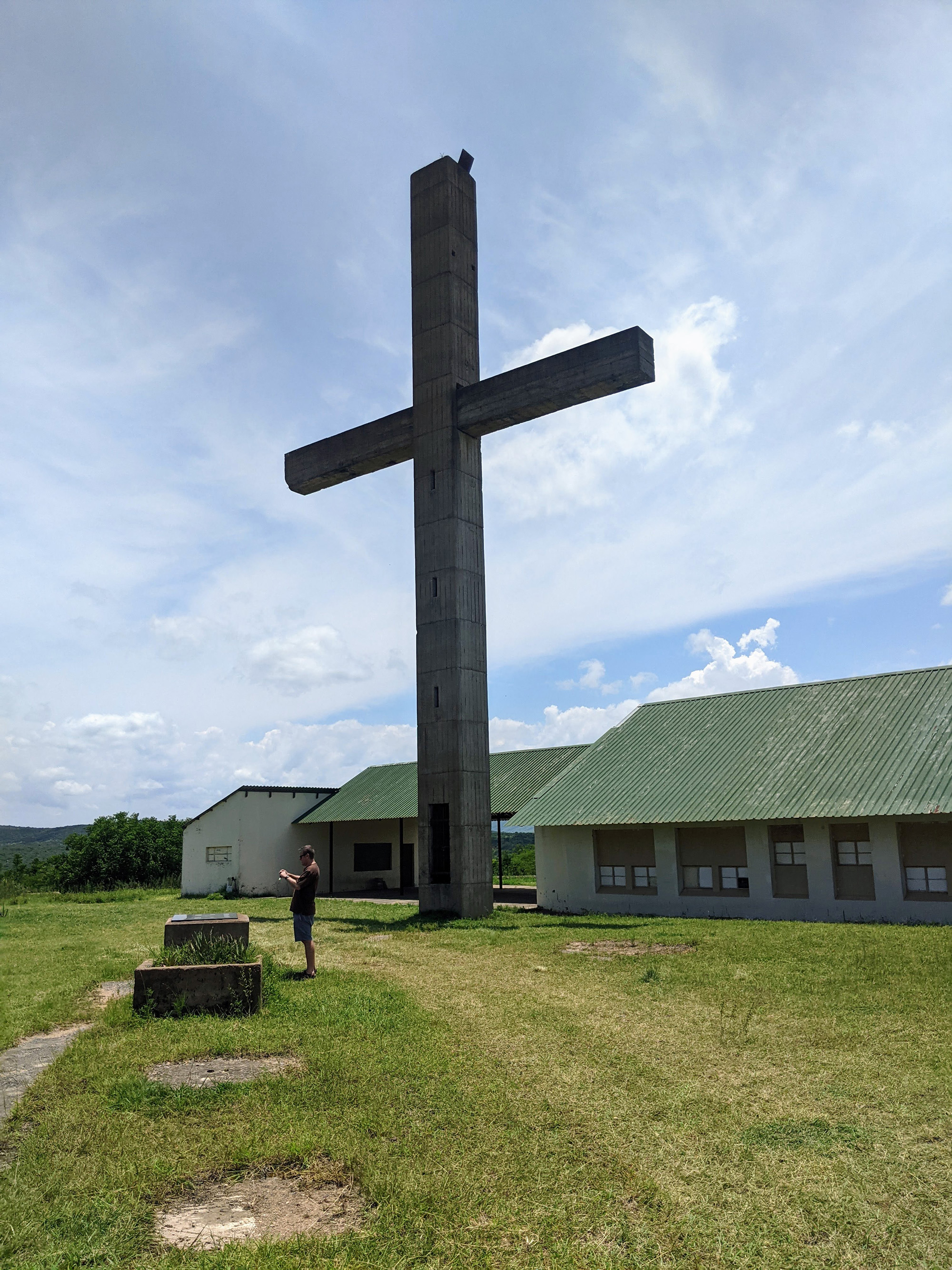
Today, a giant cross stands at Owens Camp, at the site of the missionary’s former station. (Photo: Peterson Toscano)
On 6 November 1837, Francis Owen appears to have dined with Piet Retief and Dingane. According to Owen, both he and Dingane “were much pleased with the frank and open manners of our guest”.
Where would this meal have taken place? I peered into the reconstructed palace, with its neatly swept floor. I tried to picture a bearded Piet Retief, “frank and open”, sitting on a grass mat, eating pap and meat with his fingers, then thanking his host.
Two days later, Owen reports a conversation with Retief, where he tried in vain to persuade the Voortrekker leader not to embark on the cattle-returning errand, because Dingane had supposedly already promised this land to Queen Victoria.
Owen seems to have liked Retief, despite the latter’s imperviousness to his entreaties. In this entry, Owen assesses Retief as being “all mildness” and deeply committed to peaceful coexistence with both British and Zulus.
Visit Daily Maverick’s home page for more news, analysis and investigations
Owen’s account is, of course, at odds with the Zulu izibongo or oral tradition. For example, historian Sifiso Ndlovu notes that Retief and his party broke protocols and wandered around the city, causing locals to suspect them of military reconnaissance.
Later, when news reached the Zulu royal city of Mzilikazi’s rout at the hands of the Boers in November 1837, a pre-emptive defensive attack therefore seemed prudent.
On 14 December 1837, Owen notes a warning from Captain Gardner, of a Zulu plan to attack white settlers. Owen appears not to take this warning seriously, instead believing Dingane’s assurances of friendship.
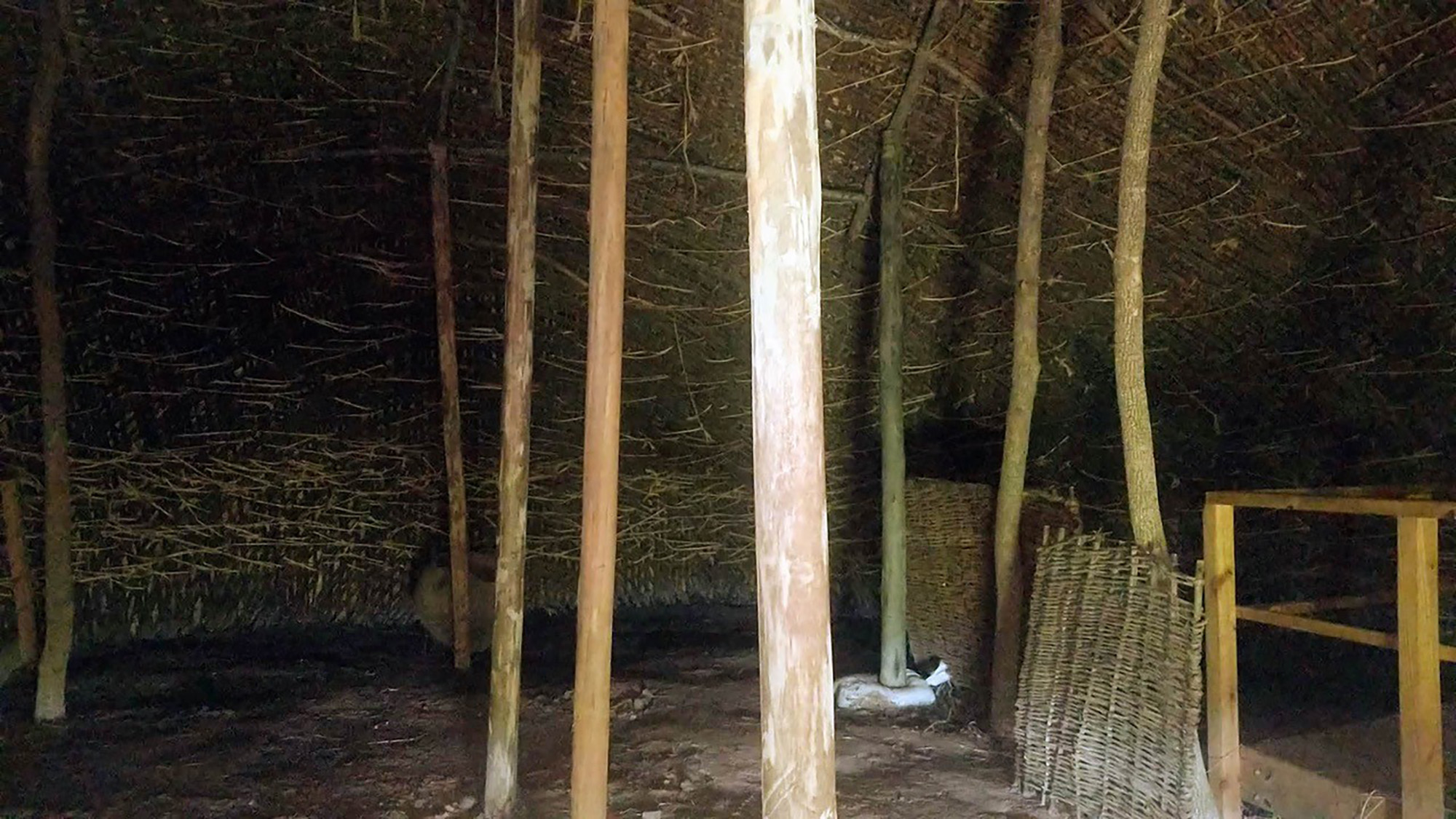
Interior of the reconstructed palace of Dingane ka Senzangakhona. (Photo: Glen Retief)
Even when the Zulu king revealed his displeasure that Retief would return the stolen cattle, but not any horses or guns, Owen failed to raise the alarm.
On 2 February, Owen manages to be doubly wrong about Dingane’s invitation, sent via messenger, to Retief to attend a celebration.
“The Dutch will be too wise to expose themselves in the manner proposed,” he writes, “but I cannot conceive Dingane meditates any treachery.”
In today’s Umgungundlovu, the fenced enclosure where Piet Retief and his party attended their final festival is perhaps 80 paces from the palace. I stood at the gap that served as an entrance — the precise spot where my ancestor’s party was asked to leave their guns.
What, I wondered, went through Piet Retief’s mind? I have travelled at least 100 times, white and unarmed, into modern, black African townships, shebeens, villages and cities. Never have I confronted any crime, and my memories of those meals, conversations, dances and friendships are some of my most treasured.
Yet Retief was not as lucky as me, and at some level, that historic trauma still seems to affect many whites who view townships as too unsafe to visit a shisha nyama or overnight in a guesthouse.
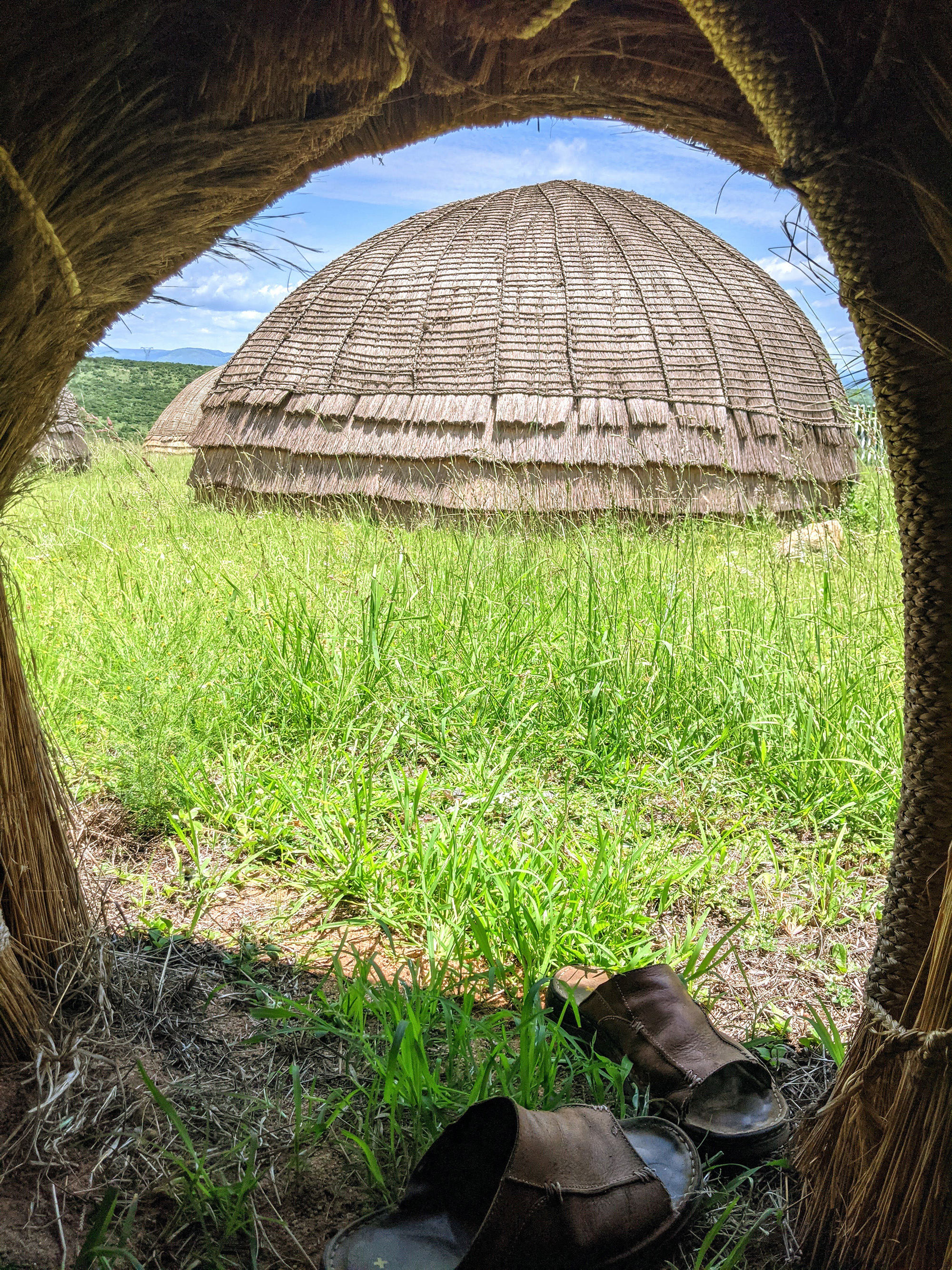
A view out of Dingane’s reconstructed palace. (Photo: Peterson Toscano)
Owen documents Retief dancing on horseback for Dingane, firing his guns to impress the monarch upon his arrival back in the city on 3 February. At the end, though, Piet Retief shows no hubris. He leaves his gun behind, trusting in simple, egalitarian companionship, and appreciating his host’s hospitality.
Today, a sign points tourists towards Kwa-Matiwane, the execution hill. Owen, whose house was adjacent, records with palpable horror the execution of the 100-odd group of Voortrekkers and their black servants:
“About 9 or 10 Zulus to each Boer were dragging their helpless unarmed victim… Presently the deed of blood being accomplished the whole multitude returned to meet their sovereign, and as they drew near to him set up a shout which reached the station and continued for a long time.”
Owen returned to Port Natal soon after the massacre, and sailed back to England in 1841. Today, a giant cement cross adorns a hotel and church on the site of the former missionary’s house.
There is a monument at the mass grave the Voortrekkers later dug, but I was unable to find any path or road leading to the execution site itself. So the place where Retief died seems to consist just of scrubby bush and cattle paths.
On the road back home, though, I found myself haunted. How my ancestor must have felt, with those arms grabbing him.
Watching his companions clubbed to death, what regrets he must have felt for trusting Dingane!
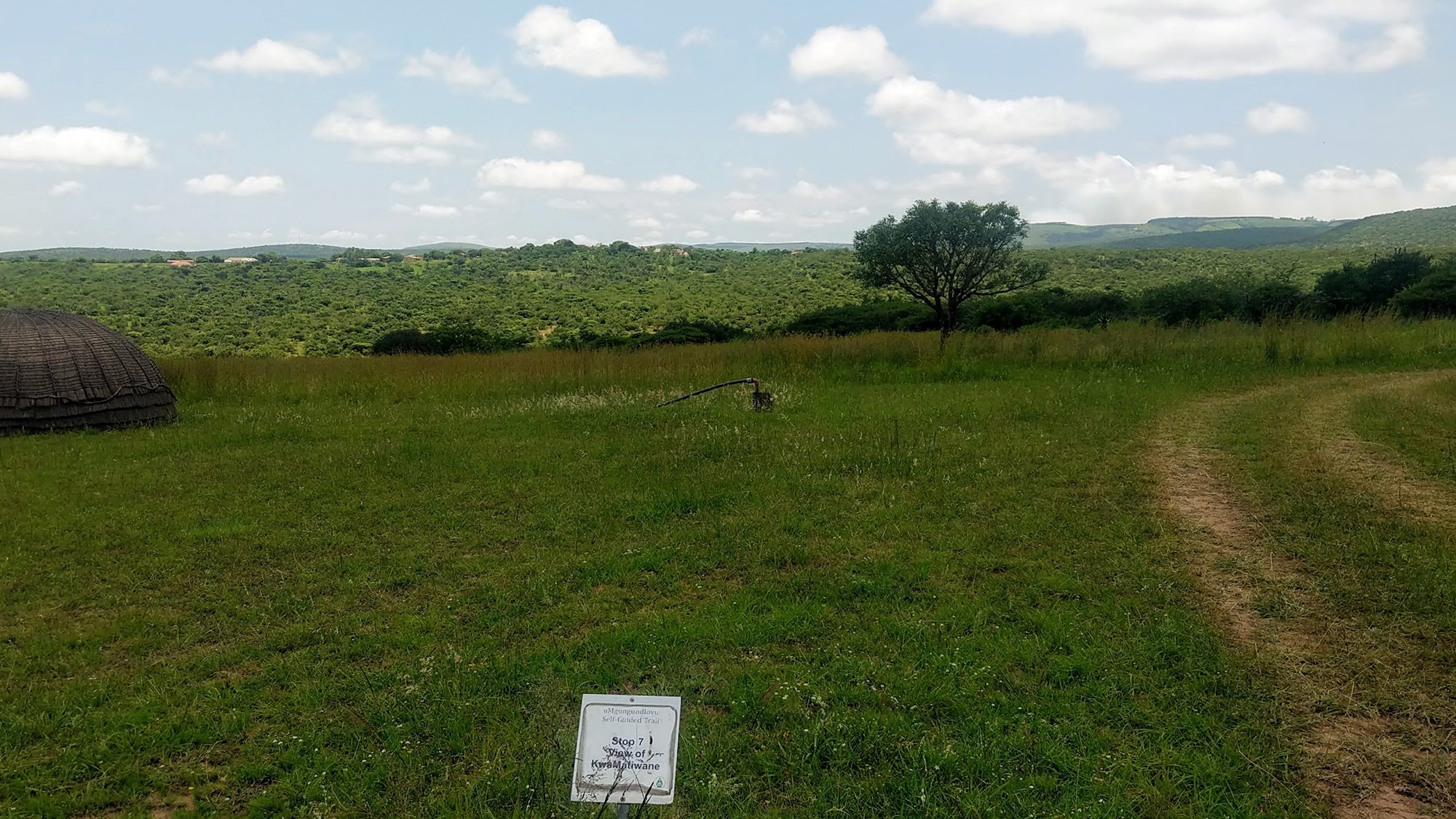
A plaque marks the direction of Kwa-Matiwane, execution hill, where the Voortrekkers and their servants were bludgeoned to death. (Photo: Glen Retief)
Did he also, I wondered, rue the Great Trek itself?
Like the narrator of TS Eliot’s “Journey of the Magi”, did he flash back, standing on that final hill, to the zinc roof and whitewashed walls of Mooimeisiesfontein? The sweet smell of earth after rain; the rocky ridge behind it, where at night he would have heard the crickets and cicadas.
As words written on paper, it had always been easy for me to distance myself from Retief. Now, though, surrounded by trees and dust, drenched in the same late afternoon summer sunshine that once shone over my ancestor’s head, I found it much harder to deny that we shared much more than a name.
We also shared a willingness to lay down our weapons at a doorway, for the sake of enjoying a banquet within. DM
Glen Retief’s The Jack Bank: A Memoir of a South African Childhood, won a Lambda Literary Award. He teaches creative nonfiction at Susquehanna University and recently spent a year in South Africa as a Fulbright Scholar.









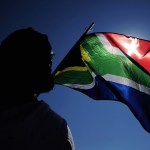










 Become an Insider
Become an Insider
It is about trust, isn’t it? And trustworthiness. A mutual act, each making themselves vulnerable.
Breaking trust is a transgression that bears ugly fruit.